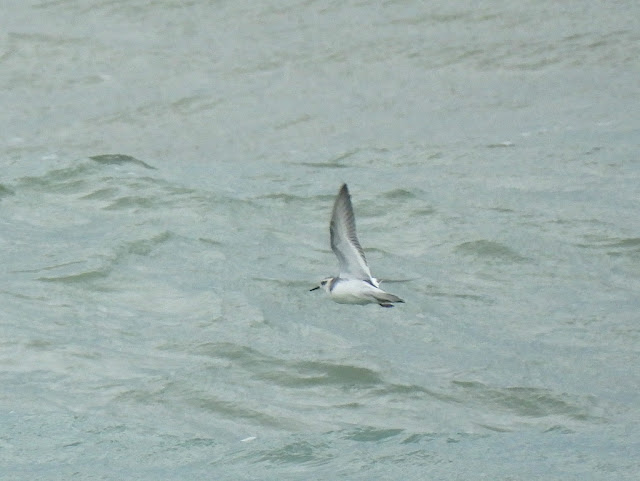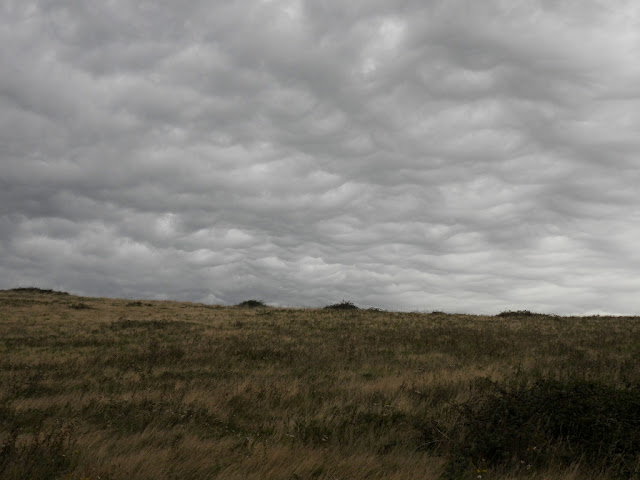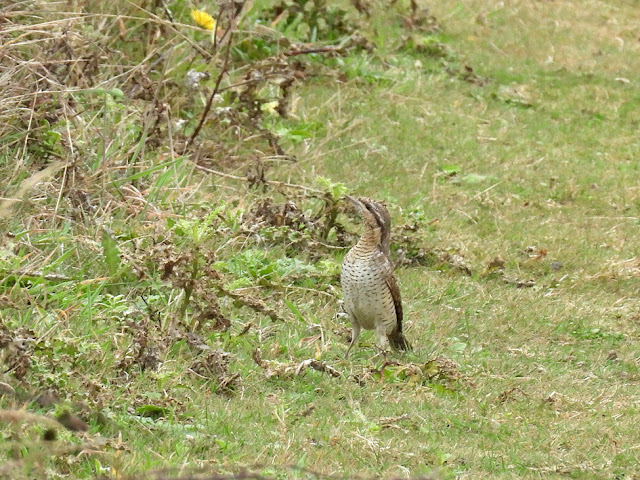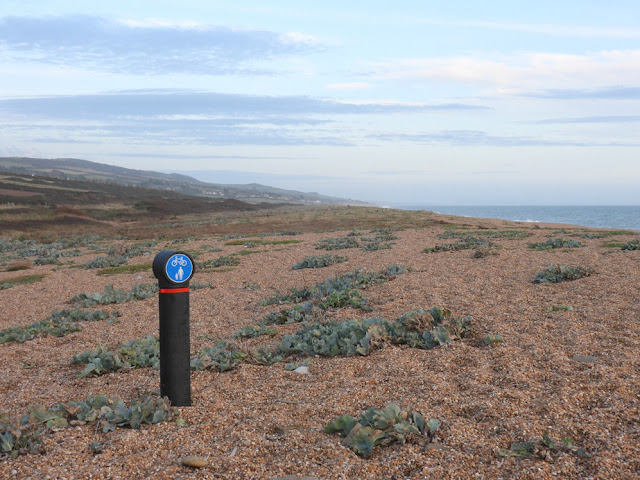I dread to think how many hours of my life have been spent seawatching here in
the bowels of Lyme Bay. And for what? Certainly there have been some special
moments but, in the main, no other aspect of local birding comes even close to
seawatching's capacity to disappoint. When conditions look fantastic, and it's
all fireworks off the Cornish headlands and South Devon, we get a dribble of
Gannets and three Kitts. If I had a pound for every time I've
rushed to one of the local seawatching spots, all keen and eager, for
absolutely no reward...
The trouble is, when the weather dictates, you've got to do it, haven't you?
Because, well, you just never know. Mind you, 'keen and eager' went out the
window a long time ago. After 20 years of being thrashed by the sea, the best
I can muster these days is mild optimism. And that way, if by some freak
chance there are actually birds, I enjoy them all the more.
As I type, the weather is dictating quite loudly, and the strong SW is
forecast to swing to SSW overnight. For the third morning in a row I shall be
at the West Bay shelter first thing. I shall try not to expect much, but will
probably fail. Why? Because Cory's Shearwater, that's why. Right now
the blessed things are everywhere. There were even two or three off Portland
today, and the Cornish coast is crawling with them.
Also, yesterday morning...
In just over an hour from 06:53 I saw 8 Balearic Shearwaters (all E)
and 3 Arctic Skuas (1W, 2E), which was not bad, but around 07:50 there
was a pear-shaped interlude. I was tracking a distant Balearic when
something bigger popped up into view, somewhat further out. My default
reaction would normally have been 'Oh, a Fulmar', but 'Oh, is that a
large shearwater?' came out instead. It seemed loose and relaxed, and,
try as I might, I got no hint of the contrasting white head that
Fulmar shows. Annoyingly I could feel a touch of the shakes coming on,
which really didn't help. My gut said Cory's, but it was literally
miles out, and only intermittently in view. In the end I alerted Mike at West
Bex that a very distant, possible Cory's (or badly cocked-up
Fulmar) was heading his way, and tried to forget all about it. Whatever
it was, Mike didn't see it.
Manx and even Balearic Shearwaters are easy enough to see off
the coast here, but larger ones? Not so much. I've seen just 19
Sooty Shearwaters (across 10 dates) in 20 years, though none since
2012, and a single [submitted and accepted] Large Shearwater sp. There
have been a couple of occasions when Cory's (and possibly
Great?) were 'available' to local seawatchers, but I wasn't able to
take advantage of them. Maybe tomorrow morning will go down as another one?
I doubt it.
Anyway, this morning I was at it again. My Balearic count was exactly
50 - which is excellent - with several very distant shearwaters almost
certainly Balearics too, but there was little else happening: just 3
Kitts, a Med Gull, and a flock of 6
Light-bellied Brent Geese through in about two hours. And I put in
almost another hour after work: 4 Turnstones and one Gannet. I am not
joking. One Gannet.
In other news...
I was very surprised to spot a pale individual among the little group of
alba Wagtails on the Brit estuary mud at West Bay yesterday
afternoon...

|
With a rump that pale, it has to be a White Wagtail.
|
The Moth Diary
Sunday night, 17th September
57 moths of 26 species; two new for year, one new for garden. It seems like
ages since we've had anything new for the year, but actually it's just a week.

|
| New for the garden. This rather nondescript character is a coastal
speciality and designated Nb (Nationally Scarce B) with just a handful of
Bridport area records on the Living Record map.
|

|
The lovely Rosy Rustic. I was beginning to wonder if we were
going to miss out this year. In 2022 we recorded this species on eight
nights, all of them somewhat earlier than 17th September too!
|

|
Pale Mottled Willow is one of my favourites, and this one is
pristine.
|
Monday night, 18th September
A puny 26 moths of 18 species; one new for year...

|
A common, variable species, and hopefully I've got the ID correct. We
trapped just one last year, also in September.
|



















































